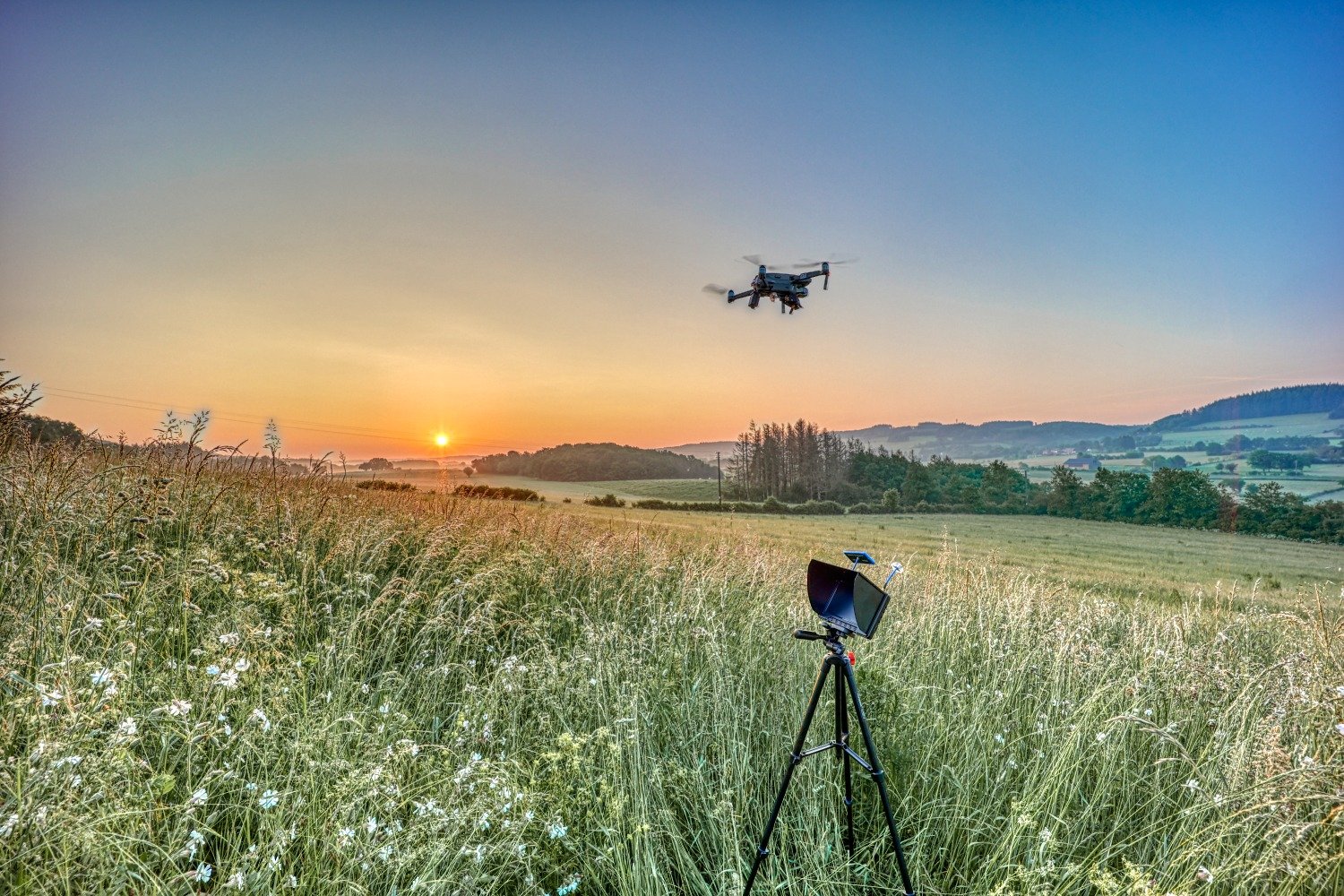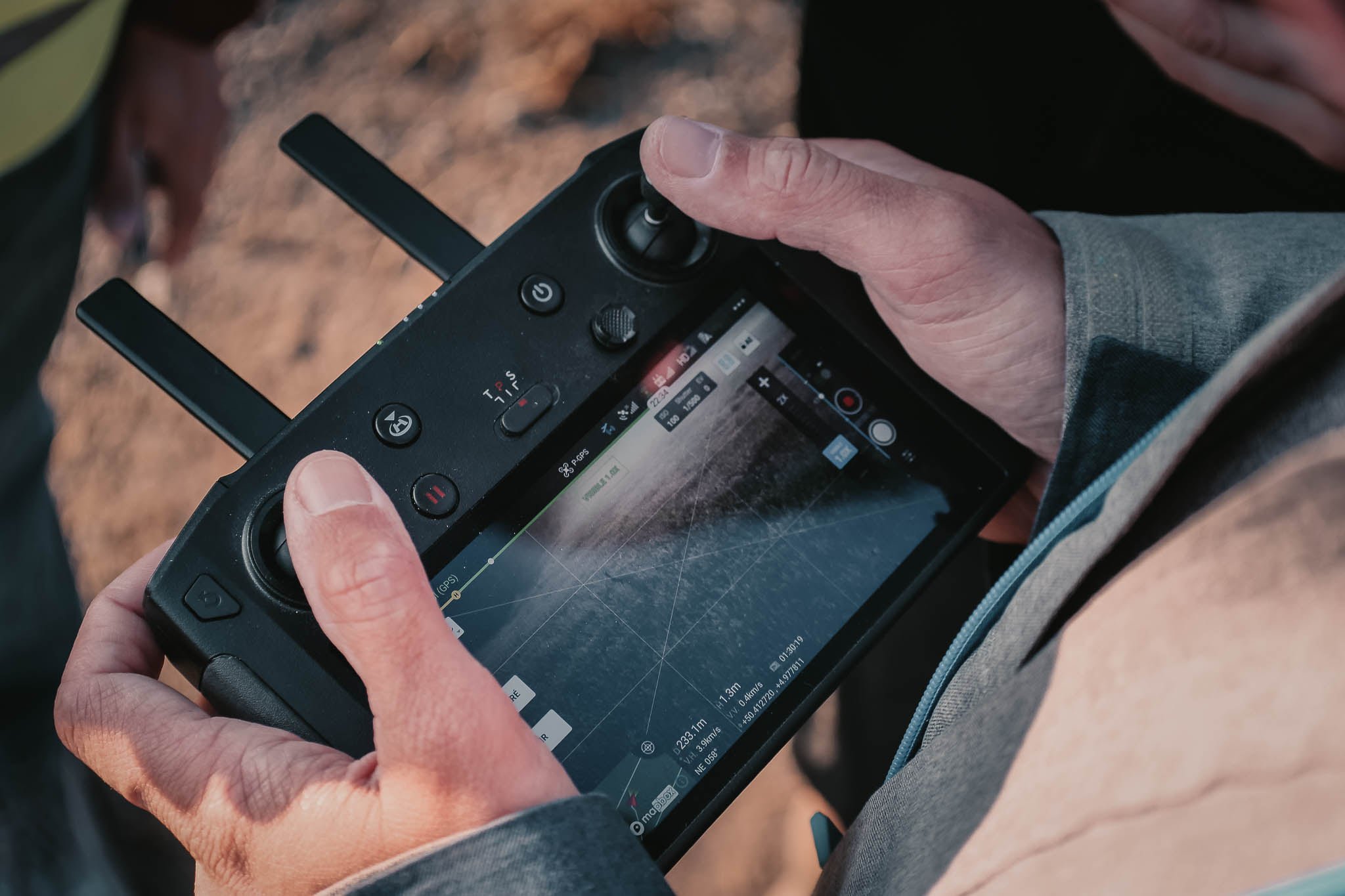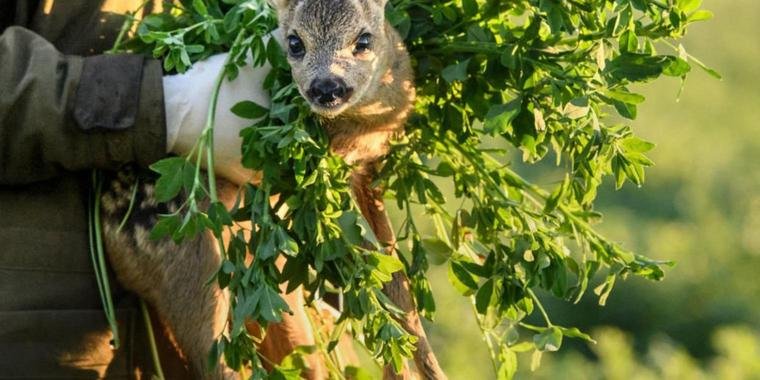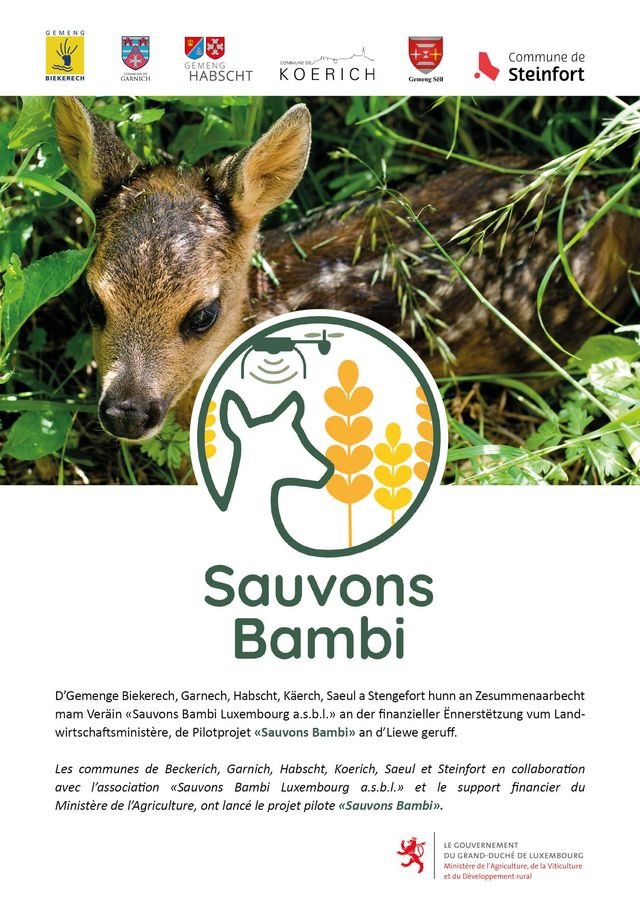Saving Bambi, one field at a time
By Kasia Krzyzanowski
Photos courtesy of Sauvons Bambi ASBL
A call comes in that a farmer plans to mow his field the next day and the Sauvons Bambi team quickly swoops into action. First they spend the evening programming automatic flight plans, then wake up the next morning to head down to the field as early as 5am, when the ground is still cool, to do a thorough scan from above with a heat-sensing drone. All white points on the screen, which indicate a heat spot, are investigated. What are they looking for? Tiny fawns, often only a few days old, that lie hidden and motionless, in the tall grass.
Fawns are well hidden in the tall grass and nearly impossible to spot from atop a tractor
A HARVEST WITH FATAL RESULTS
Every spring during the ‘fauchage’ , or hay harvest, potentially thousands of fawns are killed in Luxembourg, say Katty Leclerc and Jacques Schroeder, respectively President and Vice President of non-profit Sauvons Bambi Luxembourg ASBL. This is caused by several factors that combine disastrously at the same time.
Female deer give birth between April to July in the grassy prairies bordering their forest home, where they can easily hide their fawns to keep them safe. For the first three weeks of their lives, baby deer are left alone for most of the day, with their mother coming to feed them just two to three times daily. The fawns lay in the tall grass and stay completely still which prevents them giving off any odour that could be detected by predators like foxes and hawks.
Fawns’ survival instinct keeps them rooted to the spot even with a tractor barrelling towards them at 20km an hour
Unfortunately, this birthing period coincides with the hay harvest, when farmers mow their fields to for hay to feed their livestock. Harvesting is done by tractors, which are only getting bigger and more powerful each year. Today’s tractors can measure up to 15 metres wide and harvest at 20km an hour. Not only is it impossible for a farmer to see a fawn hidden in the grass from atop one of these massive machines but the young fawn’s survival instinct means that even if they can see and hear the tractor barrelling towards them, they will remain rooted to the spot, with fatal consequences. Sauvons Bambi occasionally shares these photos on their Facebook page, which are not for the faint-hearted.
A HIGH-TECH SOLUTION THAT SAVES LIVES




Ten years ago, after seeing a fawn that had met this fate in a field, Katty decided to start closely checking her partner’s farm fields for fawns on foot before the hay harvest. She soon regularly scanned the fields for the other farms located in her rural village in western Luxembourg, improving her technique on horseback, which was much faster and allowed her to cover more ground.
In 2020, Katty learned about Sauvons Bambi Belgique ASBL and their detection work using drones equipped with thermal cameras, a highly effective technique first developed in Switzerland. Pilots fly the drones over the fields using automated flight paths to detect the body heat of fawns and other animals such as nesting birds or domestic cats hidden among the grass. If the drone detects an animal, the volunteers note down the GPS coordinates and go there on foot to investigate. If they find a fawn, they carefully transfer it into a crate, wearing gloves covered in grass to avoid transferring their scent, then move the crate safely out of the field to be harvested. Once the mowing is finished, they release the fawn nearby so that its mother can find it again.
Aerial view of a deer and its fawn through a heat-sensing drone
Convinced by the method, Katty decided to train with the organisation and purchase a specialised drone equipped with a thermal camera, and then together with Jacques, set up their own organisation, Sauvons Bambi Luxembourg ASBL. In 2022, they carried out 126 search and rescue assignments in and around Luxembourg, scanning a total of 1850 hectares of farmland and saving 156 fawns, as well as many more animals such as hares, foxes and cats.
COOPERATION FROM FARMERS IS KEY
Part of the organisation’s work is focused on raising awareness of the issue and their solution among farmers, who can find the experience of hitting fawns traumatic. More and more farmers are getting into the habit of calling Sauvons Bambi to come and check their field before they harvest it, but not always in time to prevent tragedy. Going beyond voluntary cooperation, the organisation would like to see legal measures come into force in Luxembourg to prevent fawn deaths, following the model of Germany, where farmers are legally obligated to make an effort to detect animals in their fields before mowing or face a large fine.
VOLUNTEER TO ENSURE NO FAWN IS MISSED
Volunteers are trained to use the GPS and drone equipment for spotting fawns, as well as in the correct handling methods to move the fawns
Sauvons Bambi relies on its volunteers to ensure it can respond to each and every call about an upcoming harvest, which come thick and fast at the height of the season. The work isn’t for everyone, taking place in cold, damp, early morning conditions from 5-8am to best detect the the fawns - by afternoon the surface heat would make this impossible. Volunteers should be in good physical condition and able to walk through tall, wet, pollen-filled grass while carrying equipment and crates with fawns over uneven ground. If this work speaks to you and you can be available several mornings a week from May 1st to July 15th, contact the team at contact@sauvonsbambi.lu to apply.
A NEW PILOT PROJECT IN THE WEST
Sauvons Bambi Luxembourg has recently joined forces with the western communes of Beckerich, Garnich, Habscht, Koerich, Saeul and Steinfort to launch a pilot project this spring called “Sauvons Bambi”. Supported financially by the Ministry of Agriculture, the project will help to amplify and create awareness about their work across the region.
Interested in learning more about the project and how you can get involved? Then come to one of the upcoming info sessions in the commune nearest you:










